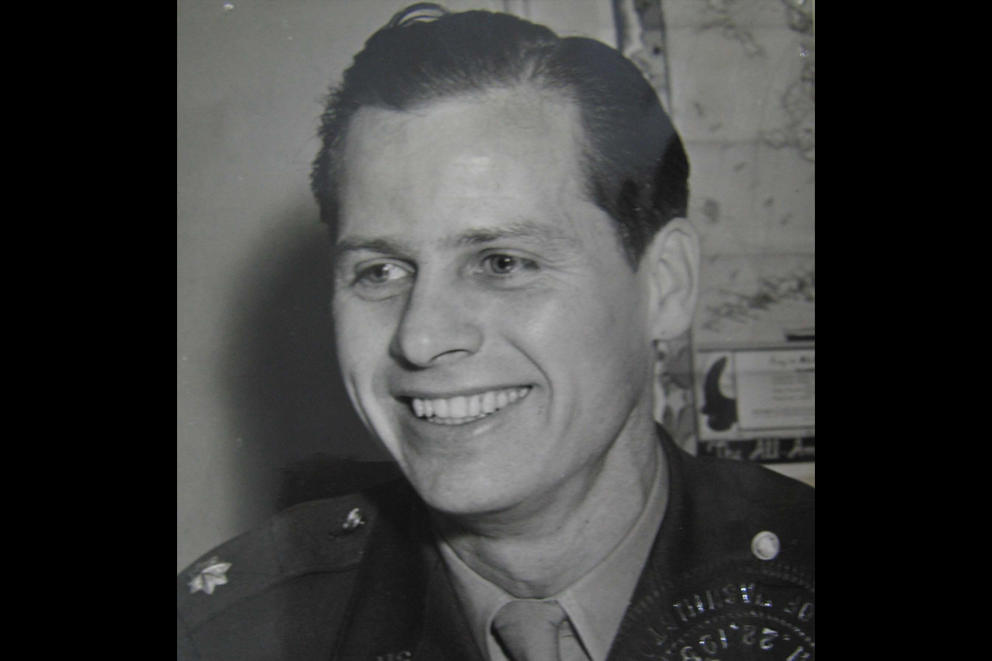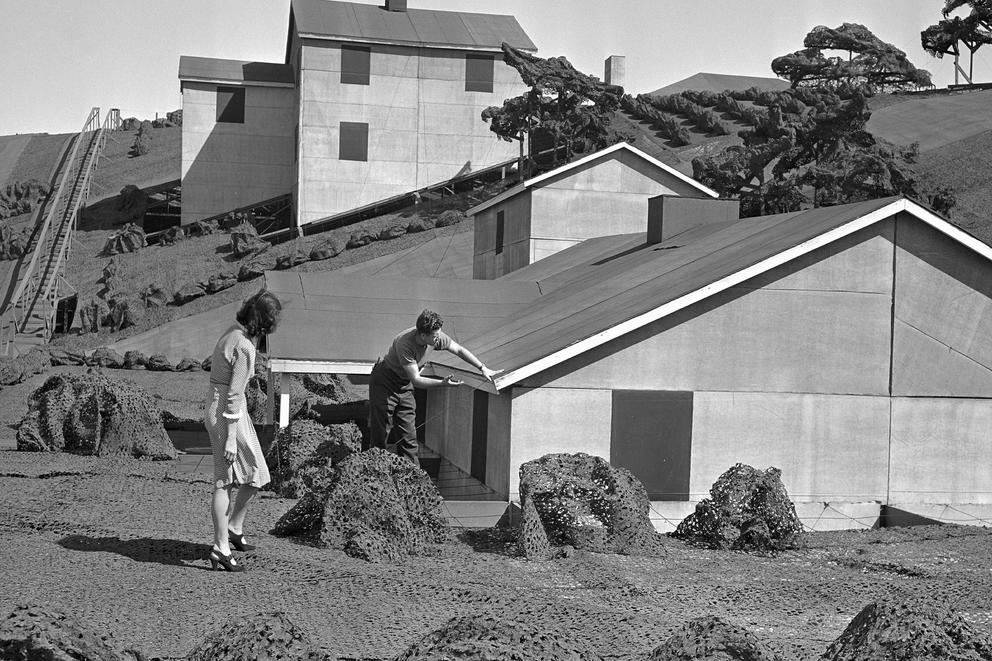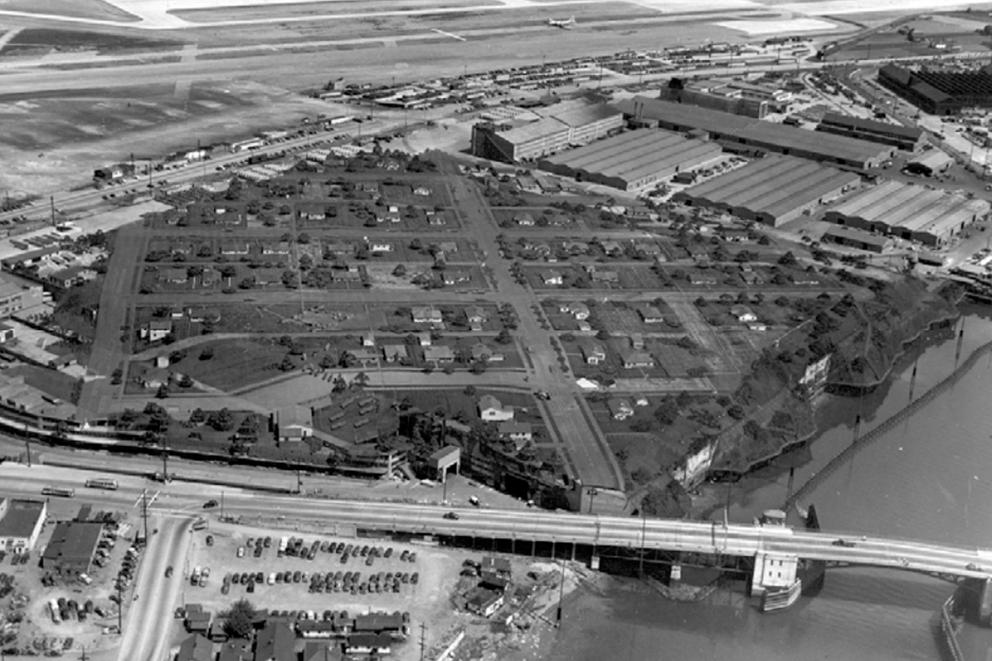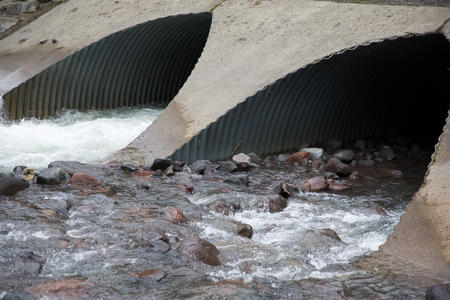After the attack on Pearl Harbor, Seattleites expected the unexpected. The city was a potential target, and near the bullseye of that target was the Boeing Company. Since the mid-1930s, Boeing’s Plant 2 on the Duwamish River had been manufacturing B-17 “Flying Fortresses,” planes that soon became key to the Allied bombing campaign in Europe.
During the war, production stepped up: Over 360 B-17s per month rolled out, some 7,000 aircraft for the war effort in all. So did the first B-29 long-range bombers, designed for use in the Pacific campaign. The plant covered nearly 25 acres and employed some 30,000 workers in round-the-clock shifts. It was a small city itself.
In 1942, John Detlie was called up from Hollywood to work in the Seattle district of the Army engineers. He was then ranked a captain. He brought his new celebrity wife, who purchased them a home on Mercer Island. Detlie’s assignment was to camouflage Northwest strategic infrastructure from possible prying enemy eyes.
Lake took a months-long break from filming to participate in war bond drives and civic events. There was no camouflaging her star power to help the war effort.
Detlie went to work on a major assignment: disguising the massive Boeing plant so that it would not be spotted by aerial surveillance and kept safe from potential bombing raids. Boeing was turning out nearly a third of the new planes used in the war. It had to be protected.
The Army engineers’ creation had to be more sophisticated than tricking the eye with color blotches. They came up with a solution: Build a new neighborhood on Boeing Plant 2’s roof, one that would blend in with the civilian surroundings — a nice suburban kind of place. So they made streets of burlap and trees of chicken wire and feathers painted to look natural. They built squat houses on a contoured landscape — roofscape? — 53 of them in all.
They were mostly not full-sized houses when seen from the ground, but when photographed from thousands of feet up, they’d pass the smell test. They built automobiles that looked like they’d been flattened by steamrollers, shaped to trick any cameras aloft. Photographs from up there made everything look flat as pancakes anyway. But the angles and shading had to be just right. The Army was involved in camouflaging important aircraft plants in Southern California too, with plenty of Hollywood recruits to design them.
The deception spilled over from the Boeing plant’s roof. The Boeing Wonderland’s fake roads were extended across next-door Boeing Field and up a swath of the Beacon Hill greenbelt to make it look as though the roads extended there. Detlie’s team also considered building an entirely new fake airfield to fool the enemy.
In Seattle the new nabe was an open secret, but no one spilled the beans. It wasn’t until near the end of the war in the Pacific in the summer of 1945 that the public was informed about the project. Boeing employees posed in their fake Wonderland subdivision, newsreels spread the story and people were amazed at the elaborate hoax.
The attack on Pearl Harbor caused an overreaction on the West Coast, such as the cruel mass incarceration of Japanese Americans in concentration camps in the western interior. Seattle was an epicenter of that tragedy. But Japanese submarine actions off the coast, such as the 1942 shelling of Fort Stevens at the mouth of the Columbia River and the invasion of the Aleutian Islands in Alaska, rattled Seattle. There were blackouts and mobile anti-aircraft units and air-raid sirens installed on the hills and the middle of Downtown. The scare tactics worked: No one wanted another Pearl Harbor.
With the war won, Boeing’s Wonderland was dismantled in 1946. John Detlie and his fellow engineers received an Army commendation for their efforts. Detlie and Veronica Lake divorced in 1943, and while Lake went back to Hollywood, Detlie did not. He stayed in Seattle for more than a decade, becoming a prominent architect and a founder of Allied Arts, a major civic group. He was the first chair of the Seattle Arts Commission. He designed buildings at the University of Washington and Children’s Orthopedic Hospital, and he was one of the main designers of Temple de Hirsch Sinai.
These were real, permanent contributions to the city.
Funny that he’s best remembered for a fake neighborhood to fool an enemy that never came.





